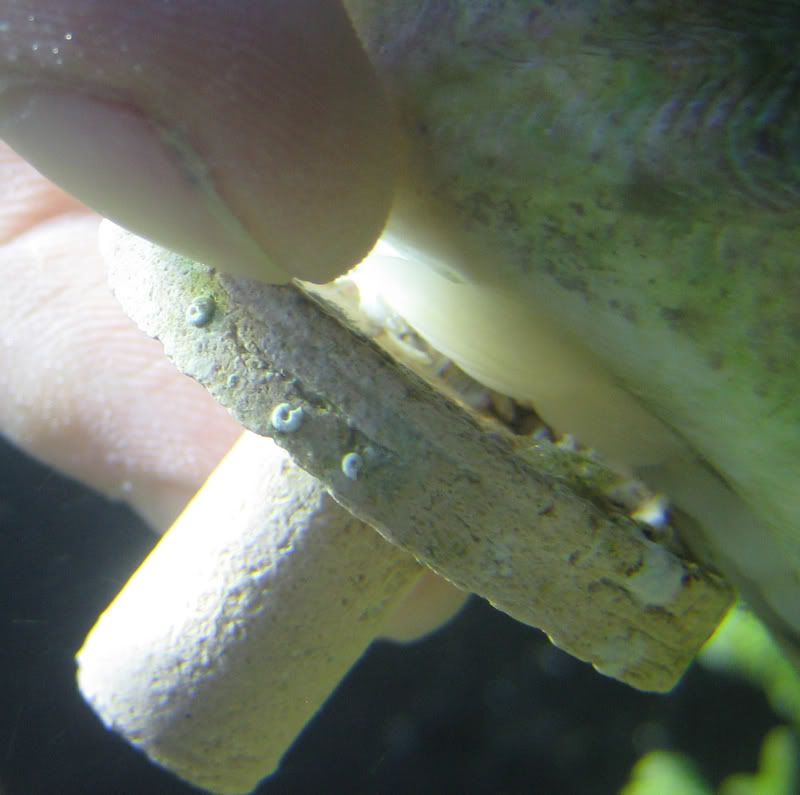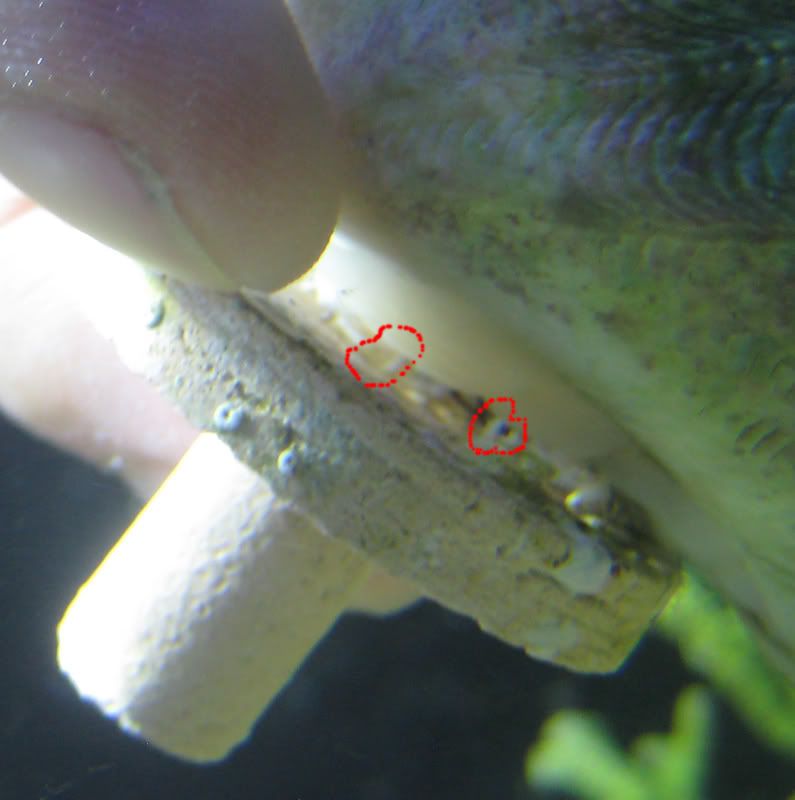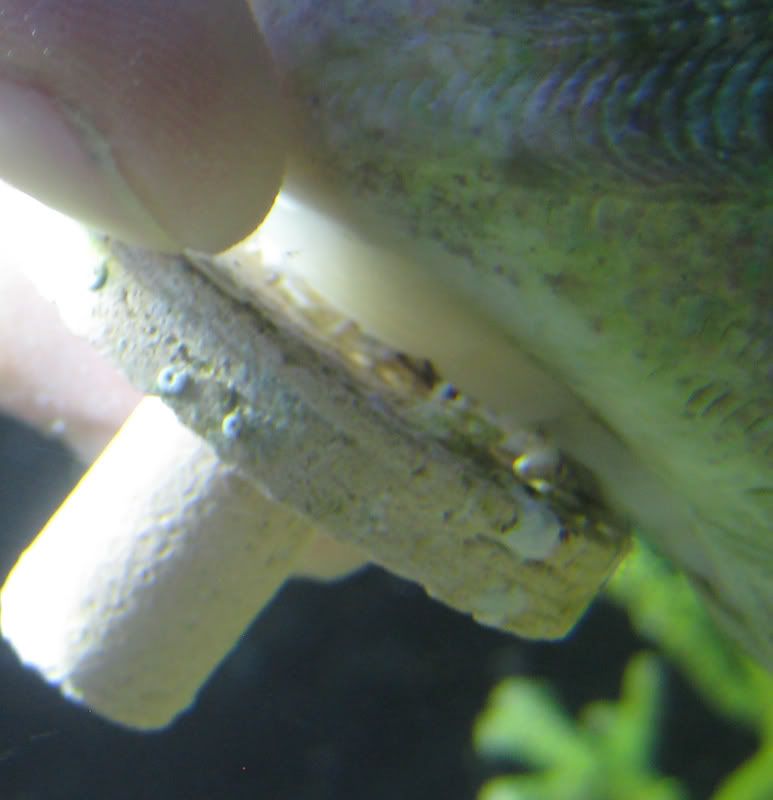


|
 |
|
|
#1 |
|
SLim Jim
Join Date: Apr 2008
Location: Near Ohare, Des Plaines 60016
Posts: 1,096
|
How to attach your clam easily and how to remove him!
Hello Hello RC.
As we all know, Clams are awesome, beautiful, and irresistible. Everyone that sees them gets big eyes and wants one. Well, in this thread I would like to take some of the ambiguity out of two things. #1- How to properly attach your crocea/maxima clam to something usable. #2- How to remove your clam from something that isnt usable. Now, before I start, these are the things that I have observed from the clams that I own. I am definitely not an expert in clams. I am a mechanical engineer and have a good sense of recognizing patterns. Ive seen, recognized, and handled many clams and clam behavior thus far and I am just trying to pass on some of my findings. You must observe your own animals to find their patterns. On with the show.  #1- There are a lot of questions on what to do about attaching your clam to a rock or something similar. How do you do that though? Well lets try to understand how it moves first. Since this is a living creature, it moves. When it moves, it does two types of moving. Movement The first is it closes it shell rapidly. A clam is mainly filled with water when its shell is open so when it closes, the water pushes out of its holes/valves. Since it has control of three valves, (its intake siphon, out-put siphon, and abyssal glad) it can shoot water out of any one or any combination of these valves as it closes its shell rapidly. The second is the muscle called the abyssal gland. When it wants to adjust its orientation in relation to the light source, it pushes down to one side with its "foot." This happens as it rapidly closes its shell as well but, it can actually sort of jump up to tilt itself to one side. It can also use its abyssal gland to dig itself deeper into a sand bed. While it closes its shell, it shoots water through its abyssal opening (to loosen and remove the sand below it) while shooting its "foot" downward. These are the types of movement that ive seen from my clams. Knowing how they move, you can appropriately place them in your aquarium accordingly. Now, lets say you just got a new clam, where to place it? Placement The easiest place is the sand. But wait, dont you want it to attach to something? Yes! you do, but lets put something underneath it that will make it easier on you to take care of this clam. After all, it mainly survives on light so make it easy to place it in a location where it will get a lot of it. Also, if you need to move it later (because for whatever reason, you dont like your aquascaping), you can! So take a small rock, or use what I like to use - a frag plug, and place it just deep enough in the sand to where the surface of the plug is the only thing showing. Kind of like a small crater. Then, place your crocea/maxima clam into that little crater and put some sand around it. BAM! Done......Now let that guy sit for 3 days and he should be attached pretty firmly to that plug. Now, if you cant keep your clam down at the bottom of your aquarium because of the lack of light, improvise. Take a small rubbermaid container and fill it with sand and place it high in the aquarium. There are ways to go about doing this. Below is my clam after hes attached himself to a frag plug. Put him on a frag plug like this.  Now you can place him anywhere in the aquarium without having to worry about him attaching permanently to some massive boulder.  #2- Removing a clam from a rock! As for the removing him from the rock. You must be VERY careful about how you move him. When they attach themselves firmly to a rock, the abysal gland makes attachment strings. These attachment strings are grown onto the frag plug/rock surface and goes straight up into the clams innards. NOTE: Any sharp movement could tear the clams sensitive tissue and cause irreparable damage! MOVE SLOWLY! Try to slowly tilt the clam left, right, back and forward to see if you can spot where the attachment string is. Work the clam in a slow methodical way to try and loosen/stretch the string. You have to do this slowly though!!!! If your wife (or significant other/little helper) is able to help you, have him/her try and shine a flashlight so you can see better. When you first start to move the clam, its going to feel you tugging on its gland and will retract everything it can into its shell. After this has happened, you will be able to see a small strand that looks like thinned out floss. You want to cut that strand with a razor blade or a modeling knife/scalpel (preferably - you can keep your dexterity with a scalpel). Do this as close to the rock as possible and then place the clam on something like a frag plug in the sand. Here is my crocea and here are the best pictures I could get of the strands. With strands outlined.  Without outlines.  Again, with the strands outlined.  Again without the strands outlined.  As you can see there are multiple strands that have attached to the frag plug. Thankfully because of the shape of the plug, the clam can only attach himself to a horizontal base. This makes it easy for me to remove him if I need too. NOTE: Just because the clam is able to attach himself to something doesnt mean it will be something important. The strands actually attached to individual pieces of sand in addition to the frag plug....... so it just goes to show you how versatile the strand attachment can be. I hope this takes some of the ambiguity out the most common questions regarding clams. Everyone always wants to know what these things look like so I hope this helps. Thanks, Slim Jim Ps-Someone should sticky this..... |
|
|

|
|
|
#2 |
|
Registered Member
Join Date: Aug 2004
Location: chicago- south side
Posts: 1,737
|
nice work Jim, thanks!
__________________
-Matt |
|
|

|
|
|
#3 |
|
Registered Member
 Join Date: Jul 2005
Location: Chicago
Posts: 11,907
|
Great thread! I found that if the attachment point does tear a little it will grow back quickly. I found that out the hard way.
__________________
Always remember.... any time you reef, you also reef with every reefer that reefer has reefed with. Mitch 2/18/10 IWNFT343F Current Tank Info: Innovative Marine 20 |
|
|

|
|
|
#4 |
|
Registered Member
Join Date: Dec 2007
Location: Milwaukee, WI
Posts: 894
|
i got a new derasa in QT, and i think he's starting to attach to the bare bottom.... how can i get him to attach to a plug in a BB tank?
jury-rig some rock rubble to hold the frag plug horizontal? |
|
|

|
|
|
#5 |
|
Registered Member
Join Date: Jan 2006
Location: Sheffield Lake
Posts: 1,341
|
I think you could put some sand in a container with a frag plug like suggested for low light applications till it attaches then remove the container.
__________________
Patience, something my reef teaches me every day... 245 Reef Current Tank Info: 245 Star Fire display,Basement Sump system |
|
|

|
|
|
#6 |
|
Premium Member
 Join Date: Oct 2008
Location: Galveston Texas
Posts: 59
|
good post!
__________________
Jason Keeling -34g red sea max -14g bio cube qt tank Current Tank Info: red sea |
|
|

|
|
|
#7 |
|
Registered Member.
Join Date: Oct 2004
Location: King William, VA.
Posts: 1,342
|
what happens if the foot attaches? I know the strands can be worked with without serious damage but I thought if the foot attached there was no moving it without harming the clam.
__________________
WayneY Current Tank Info: 90g reef(2x400w20k)Remora Pro,40g breeder reef(1x400w14k)CPR BakPak2R,120g fresh and 30g cube 250wDE 20kAB growout tank |
|
|

|
|
|
#8 |
|
Registered Member
Join Date: Feb 2008
Posts: 245
|
Great post!
__________________
Reef Envy 120 http://www.reefcentral.com/forums/showthread.php?t=2318191 Current Tank Info: Reef Envy 120g & 60g Rimless Cube |
|
|

|
|
|
#9 |
|
Registered Member
Join Date: Jun 2017
Posts: 21
|
Good read
|
|
|

|
 |
| Thread Tools | |
|
|